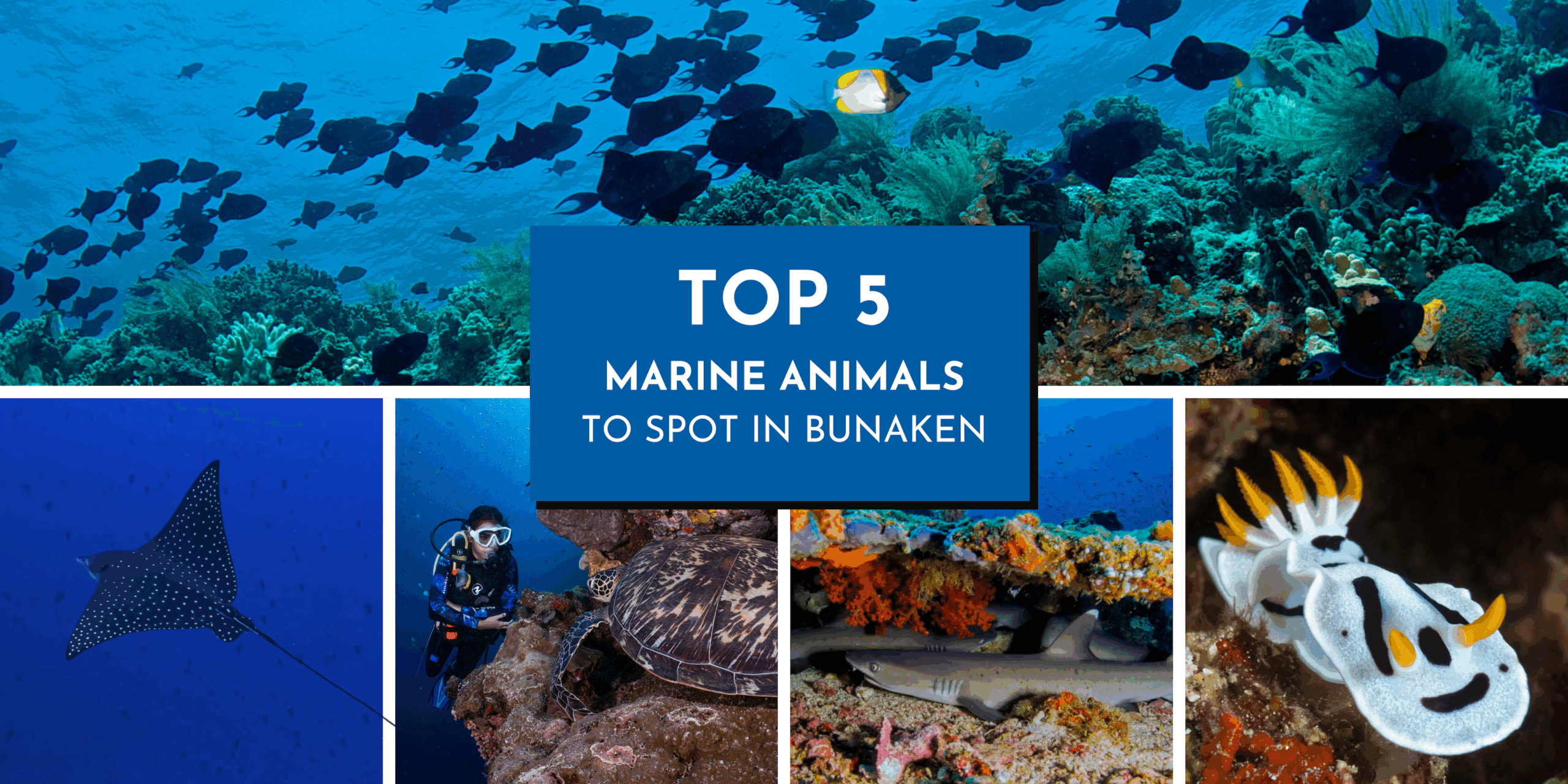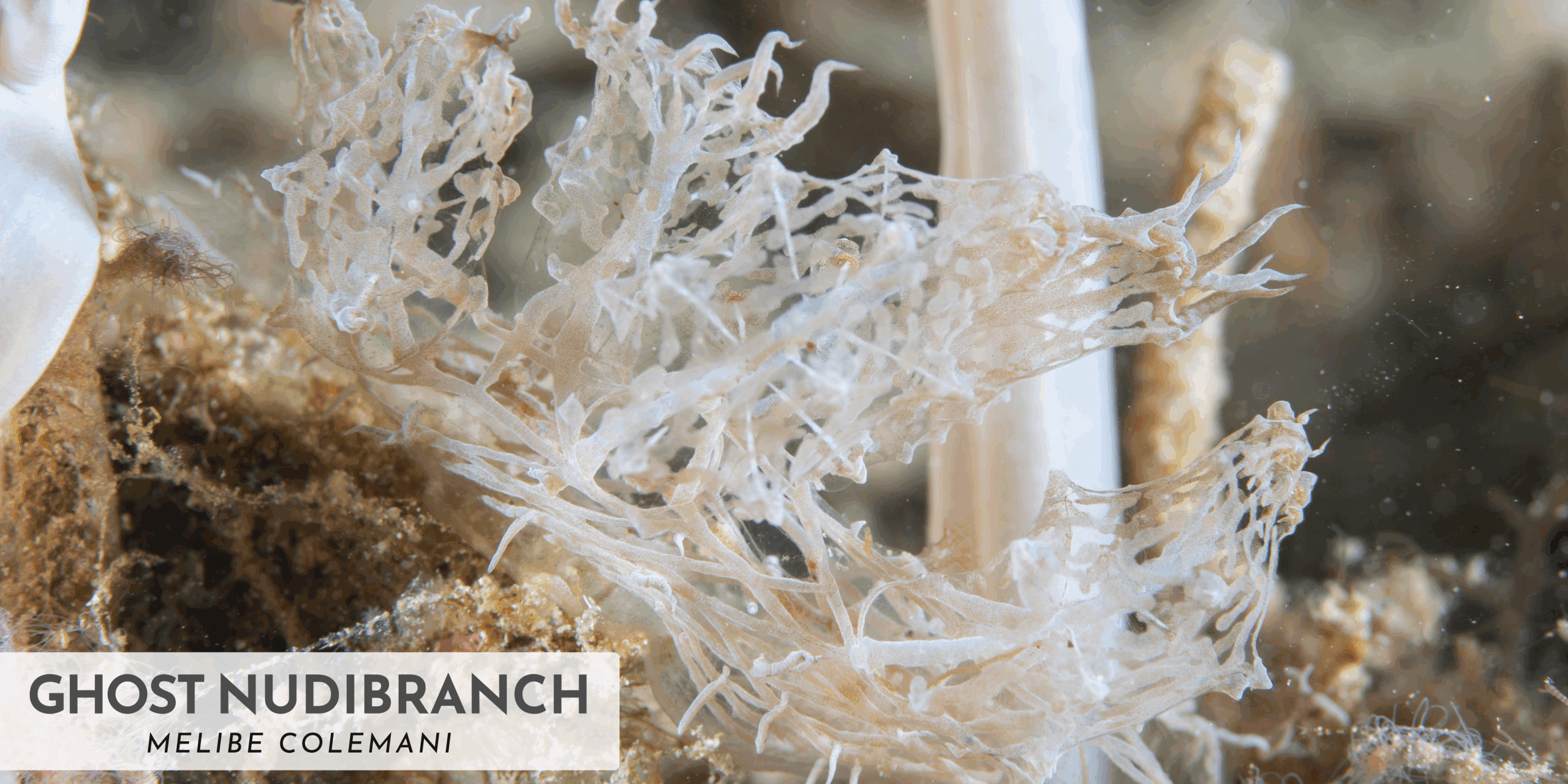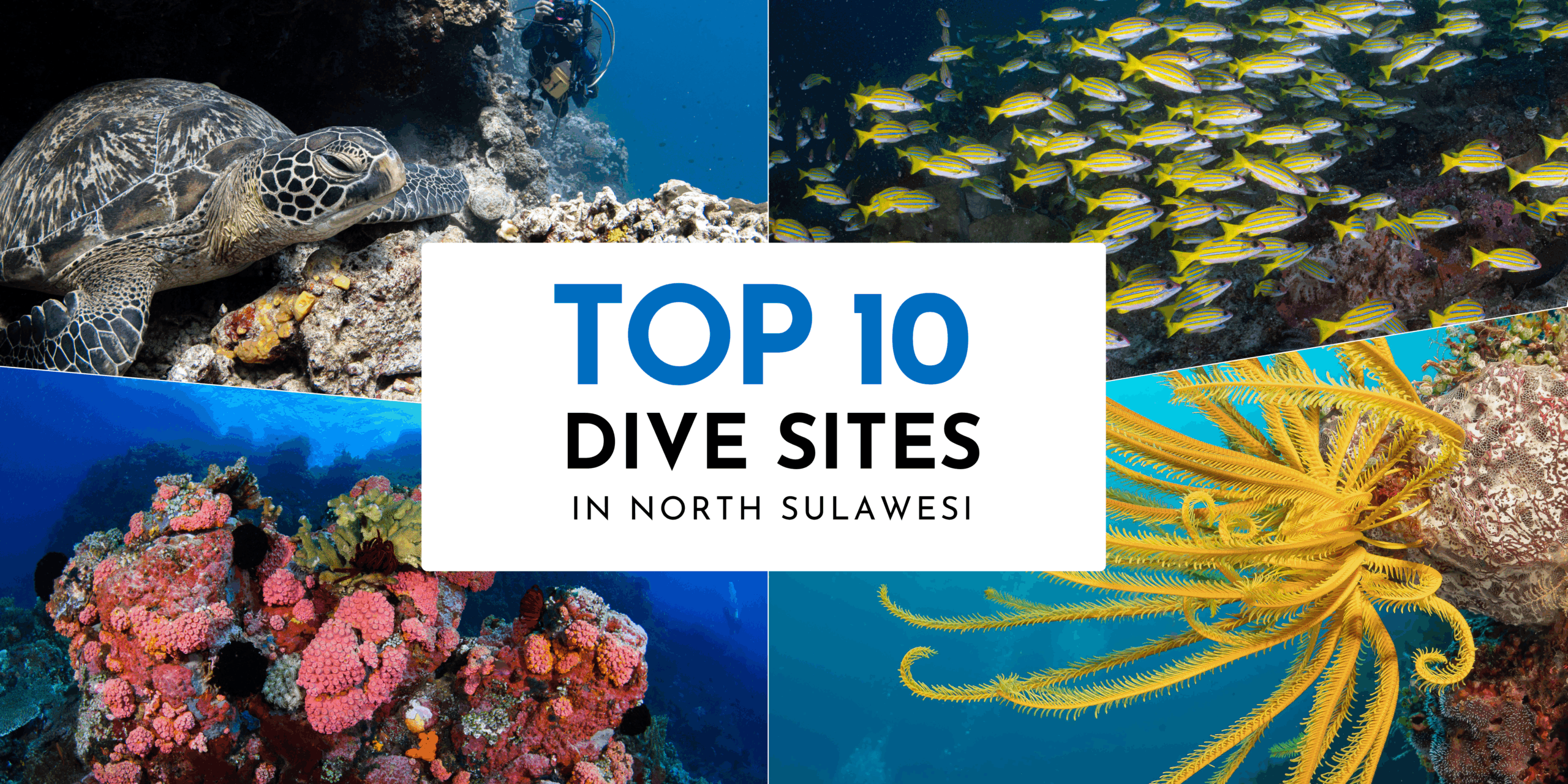Ultimate Guide to Nudibranch of North Sulawesi – Part II
Welcome to part II of our Ultimate Guide to Nudibranch of North Sulawesi. In this edition we’ll be introducing you to another 7 beautiful nudibranch species which we commonly find around North Sulawesi – there are just too many species to include in one guide!
Read on to find out more about the intriguing nudi’s we find around Manado Bay, Bunaken and Bangka Island….
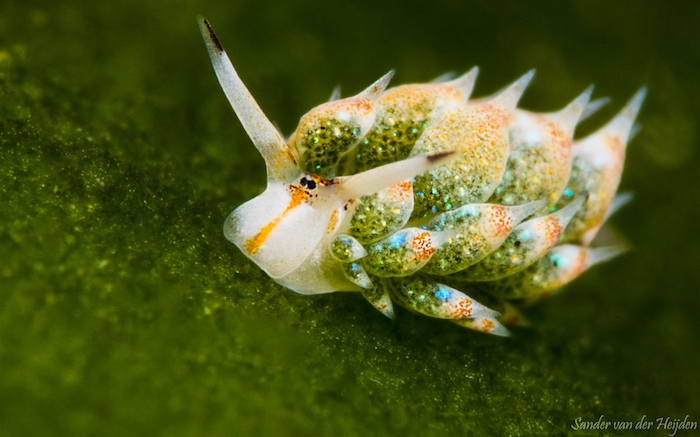
The intricate Costasiella kuroshimae nudibranch is known as the “Sean the Sheep” nudi
Costasiella kuroshimae
This species was officially recognised in 1993 so it is a relatively new discovery! The intricate pattern created by the cerata (finger-like appendages which cover the body) make this an intriguing looking species. The two small black dots between the base of the rhinophores give this nuibranch a “face” which is similar to that of Sean the Sheep from the Wallace and Gromit movies – hence it’s common name! This species’ color varies but it always with a greenish diamond shaped patch behind the eyes. We see this species most often on sandy patches between reefs – it can be extremely difficult to spot as it grows to just 7mm.
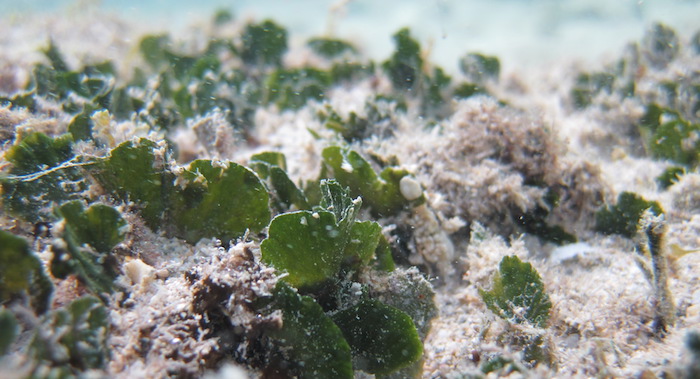
Sean the Sheep nudibranch are found on Avrainvillea algae
Best Dive Sites: Because this species is commonly found on Avrainvillea algae (pictured above), it is most often spotted at Bethlehem dive site in Manado Bay and Peter’s Sponge dive site in Bangka. These two sites have prolific patches of Avrainvillea.
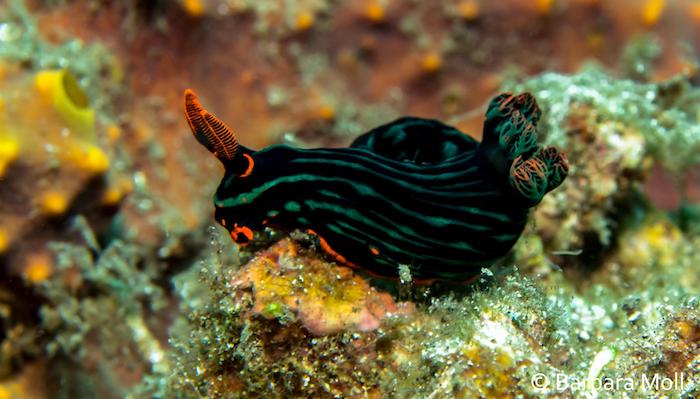
One of the most common species found in North Sulawesi
Nembrotha kubaryana
This nudibranch species is extremely common in North Sulawesi – it’s also a fantastic species to see when fluoro diving as the rhinophores and gills contain proteins that react to the UV light. This species is highly distinctive due to the orange pigment on it’s foot margin, rhinophores and gills. This is a medium sized nudibranch with a slender body which grows up to 5 cm in length. It is often spotted on or close to tunicates on which it feeds.
Best Dive Sites: Most of dive sites are rich in tunicates (food for this species) but the best sites for sightings are the wall dive sites in the Bunaken Marine Park (Lekuan 1, 2 and 3) as well as Murex Bangka House Reef.
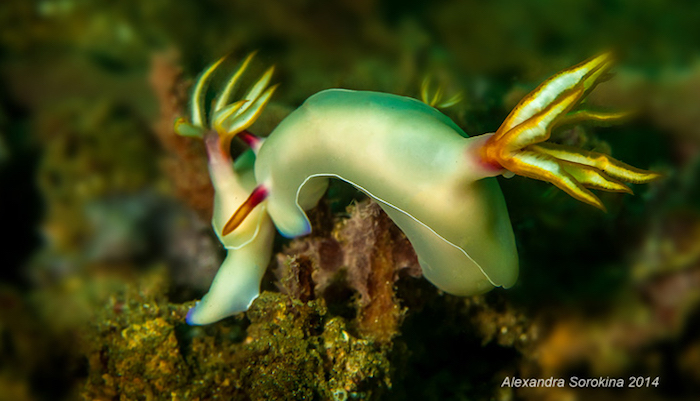
The Hypselodoris bullocki is often confused with the Hypselodoris Apolegma
Hypselodoris Bullocki
This species often displays a pink to purple coloration but variations do occur (as in the one pictured above). The distinguishing features of the bullocki are the thin white marginal line around the edge of the mantel and white and red rhinophores and base of the gills. This species feeds on sponge corals which are abundant at all of our dive sites, making is a common species. This species is often misidentified as Hypselodoris apolegma which is always pink to purple with little variation in colour, has a broader mantel margin which is speckled and lacks red on it’s rhinophores.
Best Dive Sites: If you are hoping to catch a glimpse of this nudibranch species the best dive sites are Bahama and Bulo on the Manado coastline and Pantai Kecil which we dive from Murex Bangka.
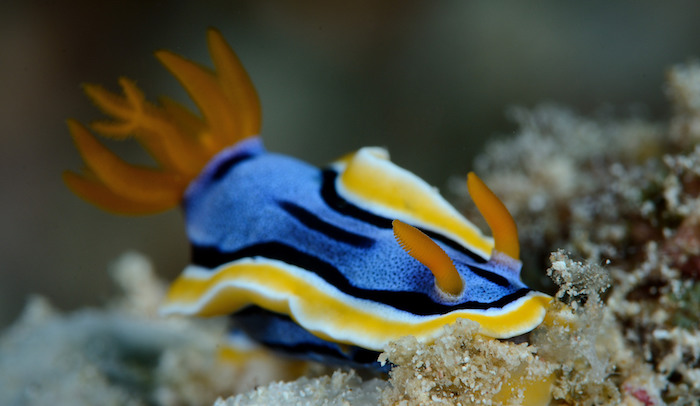
The Chromodoris elisabethina is found around Manado, Bunaken and Bangka Island
Chromodoris elisabethina
This is one of our favorite species of nudibranch and one which is exceptionally photogenic. This species feeds on sponges which lay between 5m and 30m so we see a lot of them! The elisabethina is characterised by a blue body which is encircled in black and white, a mid-dorsal, central black line (can be solid or broken) and a thick yellow marginal band. This species can grow up to 3cm.
Best Dive SItes: The best sites for this species are around Bunaken island where they feed on the large sponge corals on the walls. They are also commonly seen on our Murex Bangka House Reef and Batu Mandi.
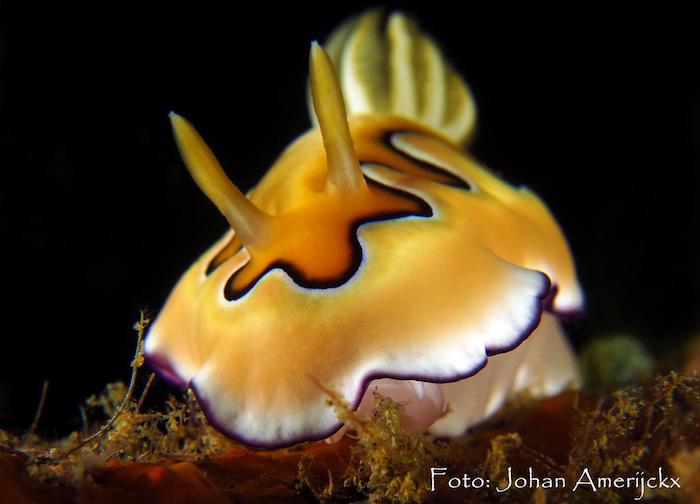
Goniobranchus coi is an underwater macro photographers favorite
Goniobranchus coi
This species of nudibranch grows to a maximum of 5cm – it’s often stationary which makes it popular with macro photographers who can take their time to capture the perfect shot. This species is predominantly yellow with a tan to rose pink central patch which is bordered by wavy black and white lines. Some individuals also display a few back dots in close proximity to the central patch lines. The mantle of this species has a purple margin followed by a white band and a wider tan colored band.
Best Dive Sites: The Geniobranchus coi is most often found at Tanjung Papaya in Manado Bay and also at Sabora on Bangka Island.
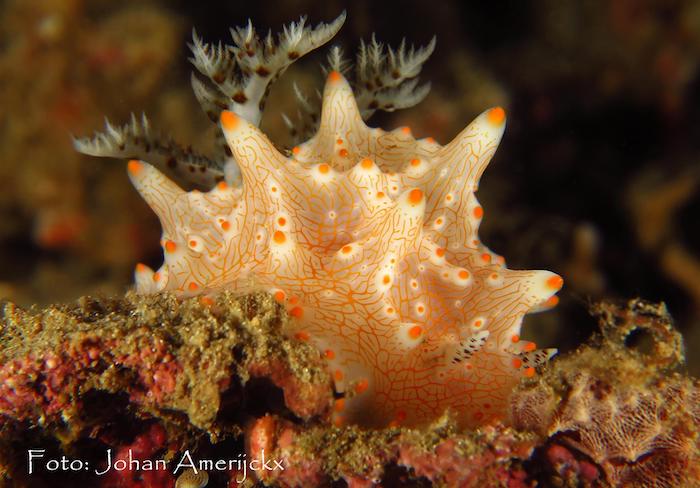
The Halgerda batangas is a highly unique looking nudibranch
Halgerda batangas
This unusually shaped species can grow to around 7cm and it has a highly distinctive appearance. It’s body is covered in tubercles (pointed lumps) which have red to orange tips outlined in white. The tubercles are often positioned in a series along the ridges. Between the tubercles, this nudi’s body is a translucent white covered in thin orange lines in a pattern of reticulation.The rhinophores and gills of this species display small brown dots over a pale or white coloration.
Best Dive Sites: If you are hoping to spot the Halgerda batangas species during your Sulawesi diving adventure you are in luck! We see this nudibranch at many dives site but hotspots include Tanjung Kelapa off the North Sulawesi mainland and, Bulo and Batu Mandi which we dive from Murex Bangka.

The Aegires minor was previously classified as the Notodoris minor
Aegires Minor
The common name for the Aegires minor (perviously classified as Notodoris minor) is the “banana nudibranch” due to it’s fleshy, bright yellow body. This is a larger species which grown up to 10cm – it’s size means it often plays host to emperor shrimps which will “ride” on the nudibranch in return for their cleaning services as they feed on the parasites which live on it’s skin. The banana nudibranch’s body is characterised by longitudinal black lines and spots and it feeds primarily on yellow calcareous sponges – which are commonly found at our North Sulawesi dive sites.
Best Dive Sites: The Aegires minor is often spotted around Bangka at Sahaung II and Batu Tiga.
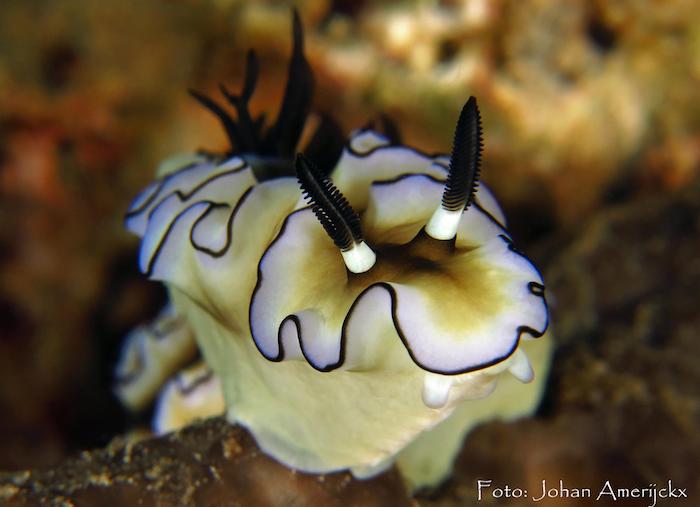
This species is a common find at both Bangka and Manado / Bunaken dive sites
Doriprismatica atromarginata
This species’ body can vary in color from a creamy white to a strong yellow to tan shade. The mantle has a distinctive black line on its edge which highlights the mantel’s strong undulation – especially in adults of the species. The rhinophores and gills are the same color as the individual’s body with black tips. This is a medium sized nudibranch which grows up to 9cm.
Best Dive Sites: This species is common at all of our North Sulawesi dive sites around Manado Bay, Bunaken and Bangka. Our favorite sites for spotting them are Tanjung Kelapa from Murex Manado and Tanjung Usi from Murex Bangka.
Did you miss Part I of our Ultimate Guide to Nudibranch of North Sulawesi? Don’t worry – you can view it here.

Explore three distinct destinations in North Sulawesi
Do you want to see as many nudibranch species as possible while you are diving in North Sulawesi? Take a Passport to Paradise with us and dive three distinct locations in North Sulawesi: Bunaken -> Bangka -> Lembeh. Discover the staggering coral walls of the Bunaken Marine Park, explore Bangka Island’s kaleidoscopic reefs and see some of the world’s rarest and most unusual marine life in the Lembeh Strait. Why choose when you can do it all – and see them all? With boat diving transfers from resort to resort there is no gear drying, packing or wasted transfer days, we take care of the logistics so you don’t need to – you simply dive, dive, dive!
We look forward to welcoming you to Murex Dive Resorts soon.


